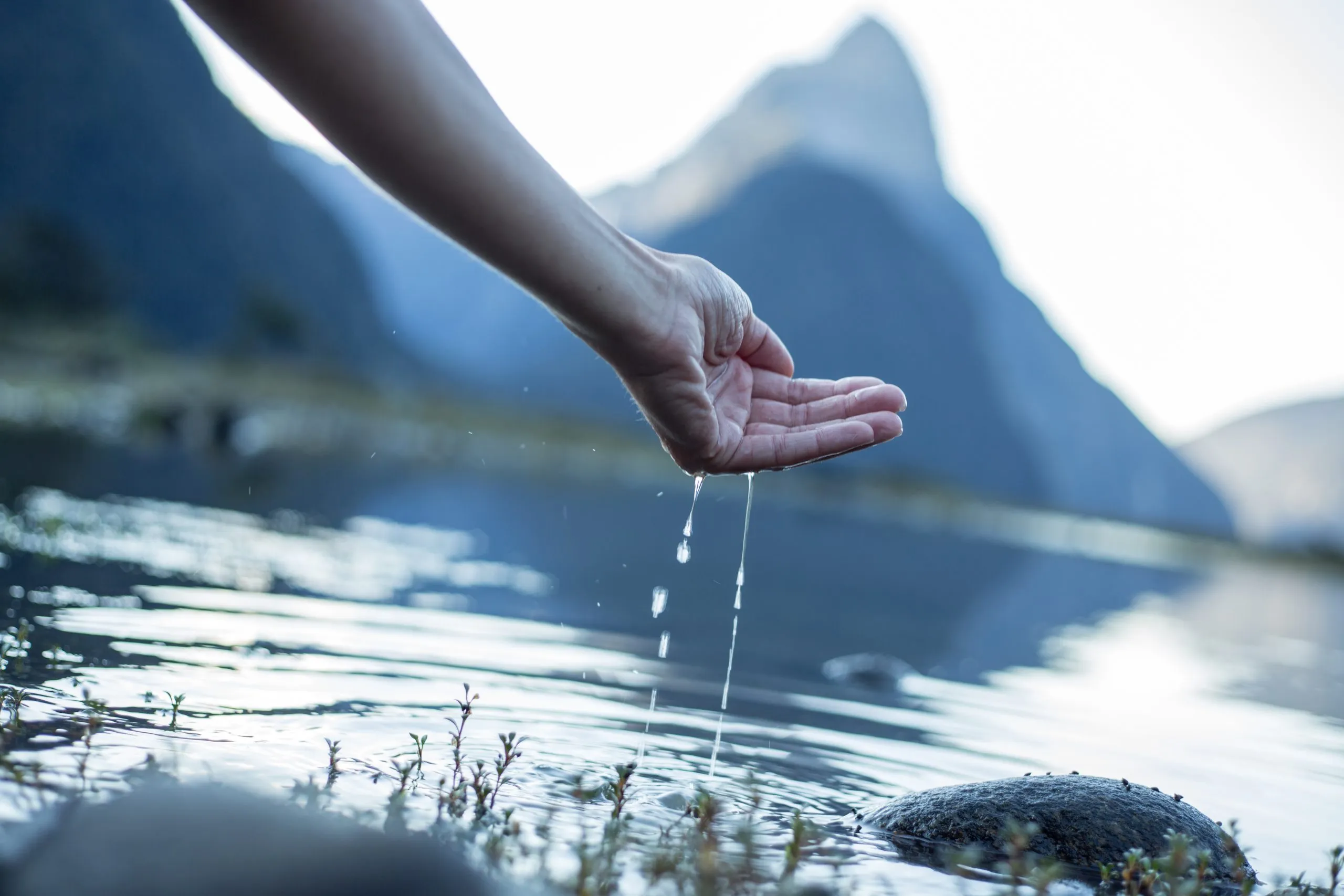By Troy Brockbank
Copyright newsroom

Comment: Water flows through every aspect of life in Aotearoa. It shapes our landscapes – from the snow-capped Southern Alps and lush native forests, to sweeping river valleys and rugged coastlines.
Water is foundational to our identity, our culture, and our economy; it sustains the land that feeds us, enables industries that drive productivity, and support prosperous, vibrant communities from Te Tai Tokerau (Northland) to Murihiku (Southland).
In Te Ao Māori (the Māori world, or worldview), wai (water) – is revered as a taonga, a treasure imbued with mauri (life force) and whakapapa (ancestral lineage). It carries stories of generations past and hopes for those yet to come. This deep respect for water is echoed in the values of kaitiakitanga – guardianship – which calls on New Zealanders to care for our natural resources with wisdom and foresight.
Despite its vital role, water is often taken for granted – used daily with little thought to the complex natural processes and delicate balance beneath our convenience. Overuse, pollution, and extreme weather can quickly disrupt this equilibrium.
New Zealand faces significant challenges: providing clean water for all, balancing demands from agriculture, industry, and urban growth, protecting aquatic ecosystems, and adapting infrastructure to volatile climatic conditions.
Addressing these issues requires us to see water not just as a commodity, but as essential to building resilient communities and thriving ecosystems.
Why water matters so much in Aotearoa
New Zealanders use an average of 213 litres per person per day in winter months, rising to 292 litres per day in summer. Some regions still face challenges with safe drinking water, with 96 long-term boil water advisories issued in 2024 as outlined in the Taumata Arowai Drinking Water Regulation Report 2024.
Our irrigated land area has almost doubled from 2002 to 2022 (from 383,000 hectares to 762,000 hectares), with Canterbury accounting for 70 percent of dairy farm irrigation nationwide.
Water also powers over half our electricity needs through hydro generation. Even solar farms must contend with stormwater risks – with the same low-lying flat land, optimal for capturing a lot of sun, meeting almost the exact definition of a floodplain – as experienced by Lodestone Energy recently, at their Waiotahe Valley site.
Floods and storms in recent years have cost billions, prompting government buyouts and new infrastructure like stopbanks. But engineered solutions alone aren’t enough – we must rethink water not just as a commodity, but as part of a living system.
Nature-based solutions: Working with nature, not against it
Local councils and communities, drawing on established wisdom and new innovations, are at the forefront of protecting assets and livelihoods from climate impacts, and nature-based solutions are emerging as a transformative approach to better water management and climate resilience.
As outlined by Te Mana o te Taiao – Aotearoa New Zealand Biodiversity Strategy 2020, nature-based solutions are “solutions that are inspired and supported by nature, cost-effective, and simultaneously provide environmental, social and economic benefits and help build resilience”. The UN Environment Programme further defines nature-based solutions as “actions to protect, sustainably manage, and restore natural and modified ecosystems that address societal challenges effectively and adaptively, simultaneously benefiting people and nature.”
In practice, nature-based solutions encompass a wide variety of locally tailored interventions, such as wetland and riverbank restoration, coastal regeneration, rain gardens and green roofs to manage flooding, and urban tree planting to cool cities and sequester carbon.
What sets nature-based solutions apart is their ability to deliver ‘whole-of-life’ value – adapting to changing conditions while providing co-benefits like improved community wellbeing, increased biodiversity and enhanced carbon sequestration. They often require less capital investment than conventional engineering solutions, and foster long-term resilience against climate impacts, particularly when solutions are integrated rather than treated in isolation. To be truly successful, nature-based solutions should be recognised as an essential part of holistic land, urban development, and infrastructure strategy.
A key characteristic of successful nature-based solutions is a ‘bottom-up’ approach – designing solutions with strong involvement from local communities and indigenous groups. Projects informed through community engagement and local knowledge, and by mātauranga Māori (Māori knowledge) alongside scientific expertise, help foster outcomes that are culturally appropriate, resilient, practical – and embraced by those they serve.
For example, Ngāti Hine Forestry Trust’s ‘He Ringa Ahuwhenua, He Hanga Mahi’ strategy is transitioning pine forests to indigenous forest, restoring native biodiversity, improving freshwater quality, and enhancing catchment resilience. This kaupapa is indigenous nature-based solutions in action – supporting local employment and blending mātauranga Māori with science to deliver climate, freshwater, and community wellbeing outcomes for present and future generations.
When done well, nature-based solutions empower people to get involved and to care for their surroundings, such as by restoring wetlands or planting native trees, long after construction crews have moved on.
Rain gardens as an effective nature-based solution for high rainfall areas
Rain gardens are an effective yet under-utilised nature-based solution for managing stormwater and enhancing flood resilience, particularly in regions of New Zealand that experience high rainfall. While rain gardens are widely recognised for their ability to filter runoff and improve water quality, their potential to mitigate both prolonged and sudden urban flooding during intense rainfall events – balanced against potential cost and maintenance requirements – remains an ongoing focus of research and practice.
Recent research undertaken by Beca with Buller District Council, and funded by West Coast Regional Council, investigated the feasibility of implementing large-scale urban rain gardens in Westport, as part of an integrated approach to urban flood management. Using historical daily rainfall data and designing storm scenarios, a theoretical water balance model was developed to assess how rain gardens perform under different conditions. Future phases of this work will include on-site trials to evaluate plant-soil combinations, filtration rates, and long-term maintenance needs – promoting practical solutions for local environments.
By integrating rain gardens with existing ‘grey infrastructure’, councils can enhance urban flood resilience while simultaneously boosting biodiversity and improving water quality. This research aims to translate theoretical insights into real-world applications, supporting best practices for sustainable stormwater management in flood-prone areas. As New Zealand faces increasingly unpredictable weather patterns, findings from these studies offer valuable guidance for engineers, planners, and policymakers seeking climate-resilient infrastructure through nature-based approaches.
Broader outcomes from nature-based solutions
Nature-based solutions also offer more wide-ranging benefits for both communities and the environment than flood mitigation or stormwater management alone.
Beca’s planning and ecology teams, working alongside Auckland Council and wider project partners, have been involved in nature-based solutions projects that take a holistic approach: considering not only resilience to flooding but also landscape enhancement, improved amenity values, and ecological restoration. For example, ‘daylighting’ streams – restoring them to their natural state – can transform urban spaces by creating attractive green corridors that support biodiversity and provide recreational opportunities.
Central to these projects is a collaborative process involving careful planning, consenting, and ongoing engagement with iwi and mana whenua. Through working closely with project partners and stakeholders, outcomes are mapped to community needs as well as environmental priorities.
Ecological design principles guide this approach, moving away from hard engineering towards solutions that integrate seamlessly with natural systems. Ultimately, nature-based solutions are not just about mitigating risks; they’re about reimagining how infrastructure can support healthier ecosystems and vibrant communities for generations to come.
Water is a taonga
Water in New Zealand is a taonga – far more than just a resource. It carries mauri (life force), whakapapa (genealogy), wairua (spirit), and reo (voice).
Our relationship with water is profound: it nourishes and sustains us, but also poses risks when mismanaged or overwhelmed by extreme events. By truly engaging with water, through Western science and mātauranga Māori, we can reconnect with nature and recognise water’s role at the heart of life in Aotearoa.
Nature-based solutions, which integrate with natural systems rather than seeking to control them, offer a practical way to honour these values while building safer, healthier, and more resilient communities.
The future depends on placing the health of our waters at the centre of decision making. It will be important to see how Local Water Done Well supports this approach: empowering councils and communities to determine how water services are delivered, ensuring public ownership and compliance with economic, environmental, and quality standards. Through Water Services Delivery Plans, each community can chart a path towards safe, reliable, and sustainable water for all.
Will we continue treating water as an afterthought, or will we listen to the lessons nature offers, and our indigenous knowledge affords? Our choices now will shape the wellbeing of people, businesses, and ecosystems across Aotearoa for generations to come.



